( 참고 : 패스트 캠퍼스 , 한번에 끝내는 컴퓨터비전 초격차 패키지 )
Semantic Segmentation - FCN, DeepLab, DeconvNet, UNet
1. FCN (Fully Convolutional Networks)
( Fully convoluKonal networks for semanKc segmentaKon, Long et al., CVPR 2015 )
Summary
- End-to-End architecture for semantic segmentation
- use ONLY CNN layers
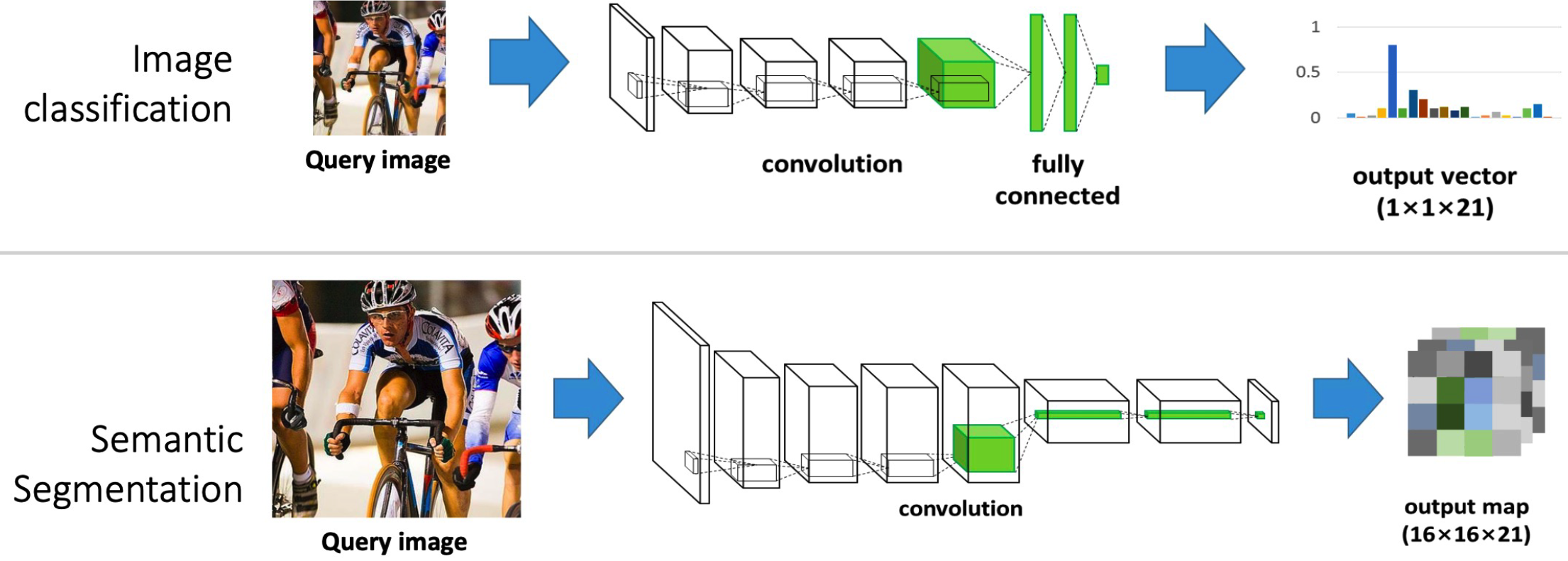
Output of FCN
-
tensor with spatial information
( no flattening …. preserve spatial information )
-
interpretation : class score over local image regions
Limitation
- Predicted score map in a very low-resolution
\(\rightarrow\) solution : enlarge the score map
Enlarging score map
- (1) add simple bilinear interpolation on the top of the netowkr
- (2) add skip connection
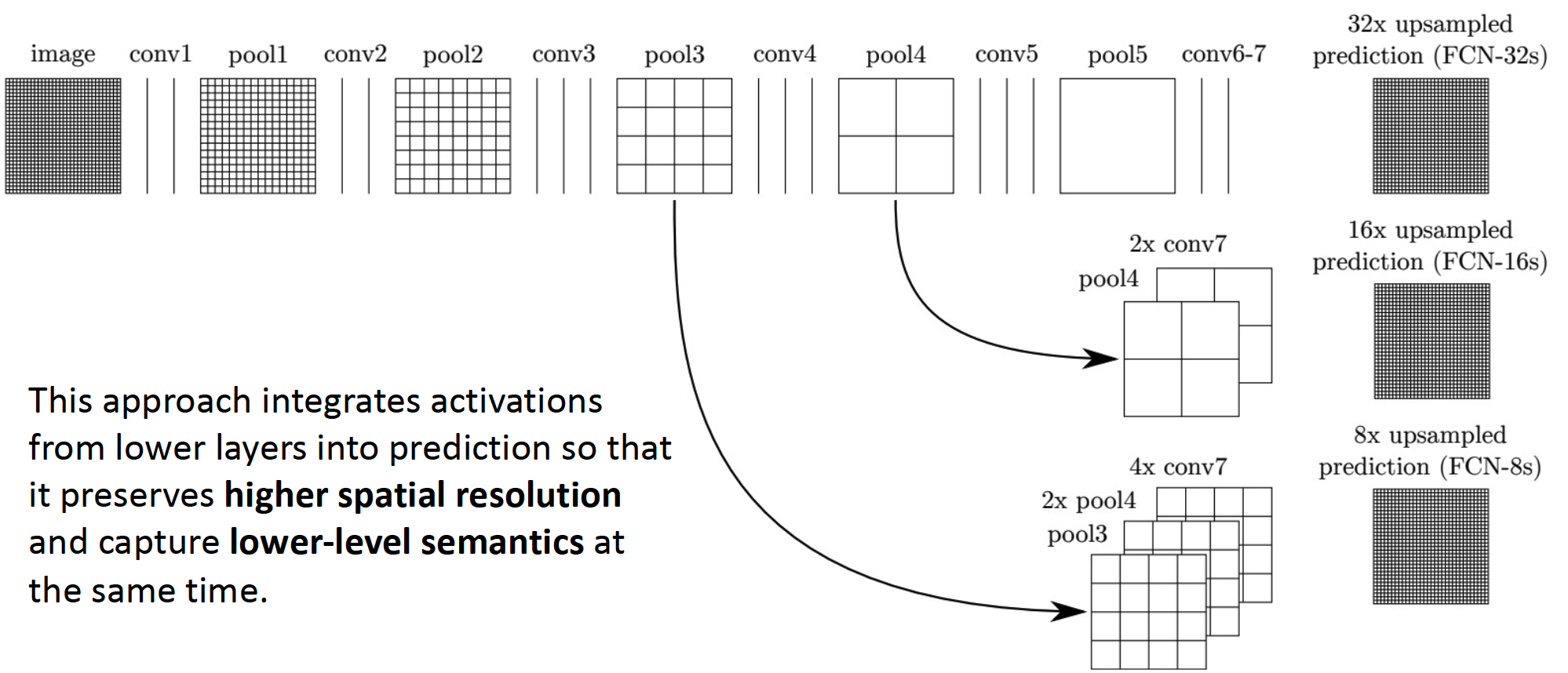
Advantages : (1) Faster & (2) Accurate
- (1) Faster :
- end-to-end
- do not rely on off-the-shelf proposal
- (2) Accurate :
- not bounded by the quality of proposal
2. DeepLab
( DeepLab: Semantic Image Segmentation with Deep Convolutional Nets, Atrous Convolution, and Fully Connected CRFs., Chen et al., TPAMI 2017 )
Summary
-
Deep Lab = Advanced version of FCN
- use Atrous Convolution
-
post-processing technique : Fully-Connected CRF ( Conditional Random Field )
- backbone : ResNet-101
(1) Atrous Convolution ( = Dilated Convolution )
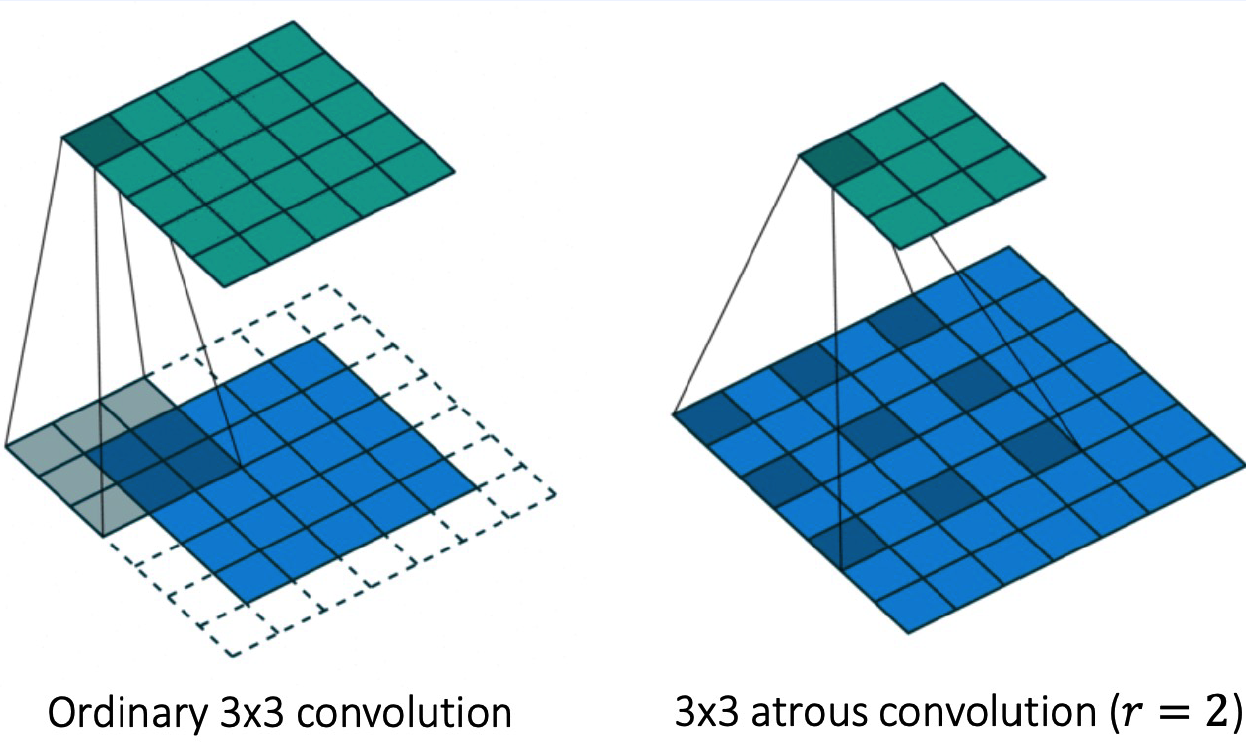
-
trous = “hole”
\(\rightarrow\) convolution kernel with holes
-
additional parameter : dilation rate \(r\)
-
enlarge receptive field
( w.o max-pooling )
-
Atrous Spatial Pyramid Pooling (ASPP)
\(\rightarrow\) captures multi-scale


(2) Fully-Connected CRF ( Conditional Random Field )
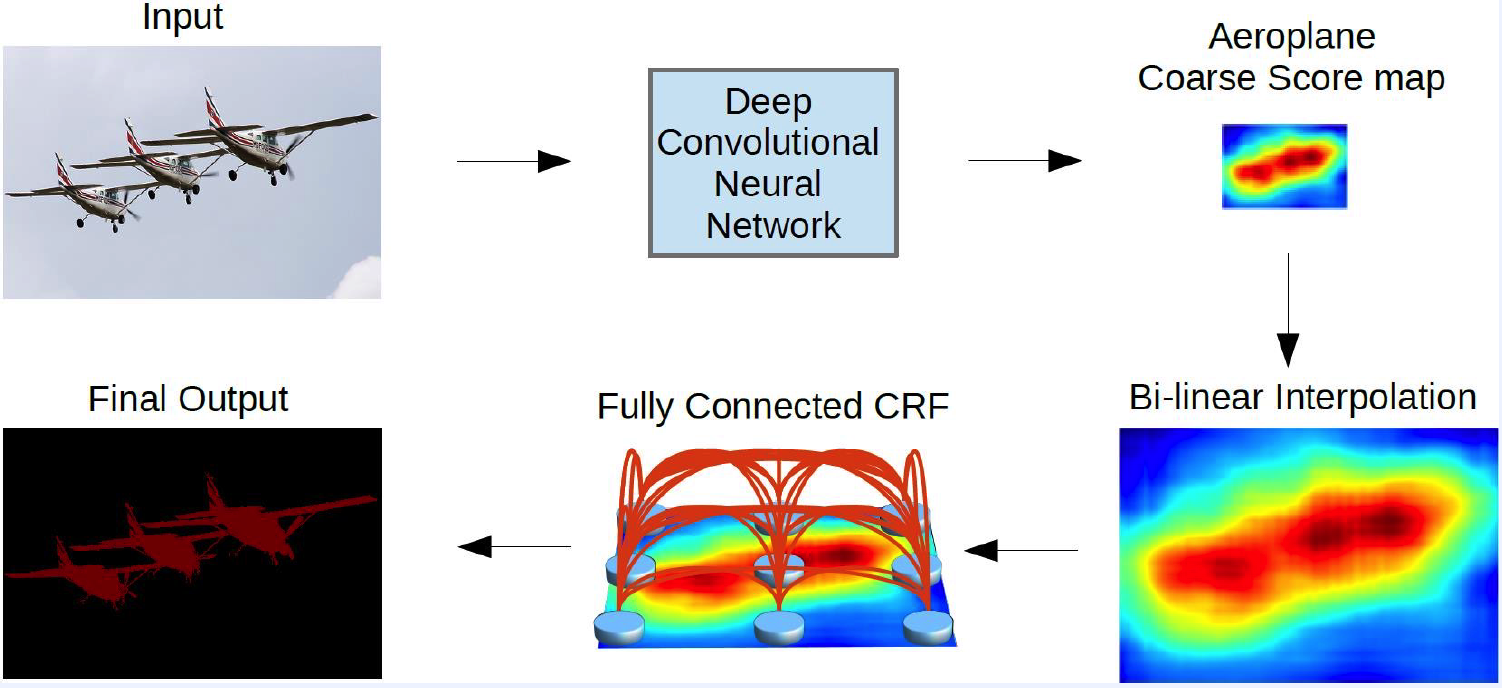
Energy Minimization
- energy = composed of unary & pairwise potentials
- \(E(\boldsymbol{x})=\sum_{i} \phi_{i}\left(x_{i}\right)+\sum_{i j} \psi_{i j}\left(x_{i}, x_{j}\right)\).
- unary potential : output scores
- pairwise potential : \(\psi_{i j}\left(x_{i}, x_{j}\right)=I\left(x_{i}, x_{j}\right)\left[w_{1} \exp \left(-\frac{ \mid \mid p_{i}-p_{j} \mid \mid ^{2}}{2 \sigma_{\alpha}^{2}}-\frac{ \mid \mid c_{i}-c_{j} \mid \mid ^{2}}{2 \sigma_{\beta}^{2}}\right)+w_{2} \exp \left(-\frac{ \mid \mid p_{i}-p_{j} \mid \mid ^{2}}{2 \sigma_{\gamma}^{2}}\right)\right]\).
3. DeconvNet ( Deconvolution Net )
( Learning deconvolution network for semantic segmentation., Noh et al., ICCV 2015 )
Summary
-
convolutional ENC & DEC
-
ENCODER
- convolution & max pooling
-
DECODER
- deconvolution & un-pooling
( = mirrored version of ENCODER )

(1) Deconvolution & Un-pooling
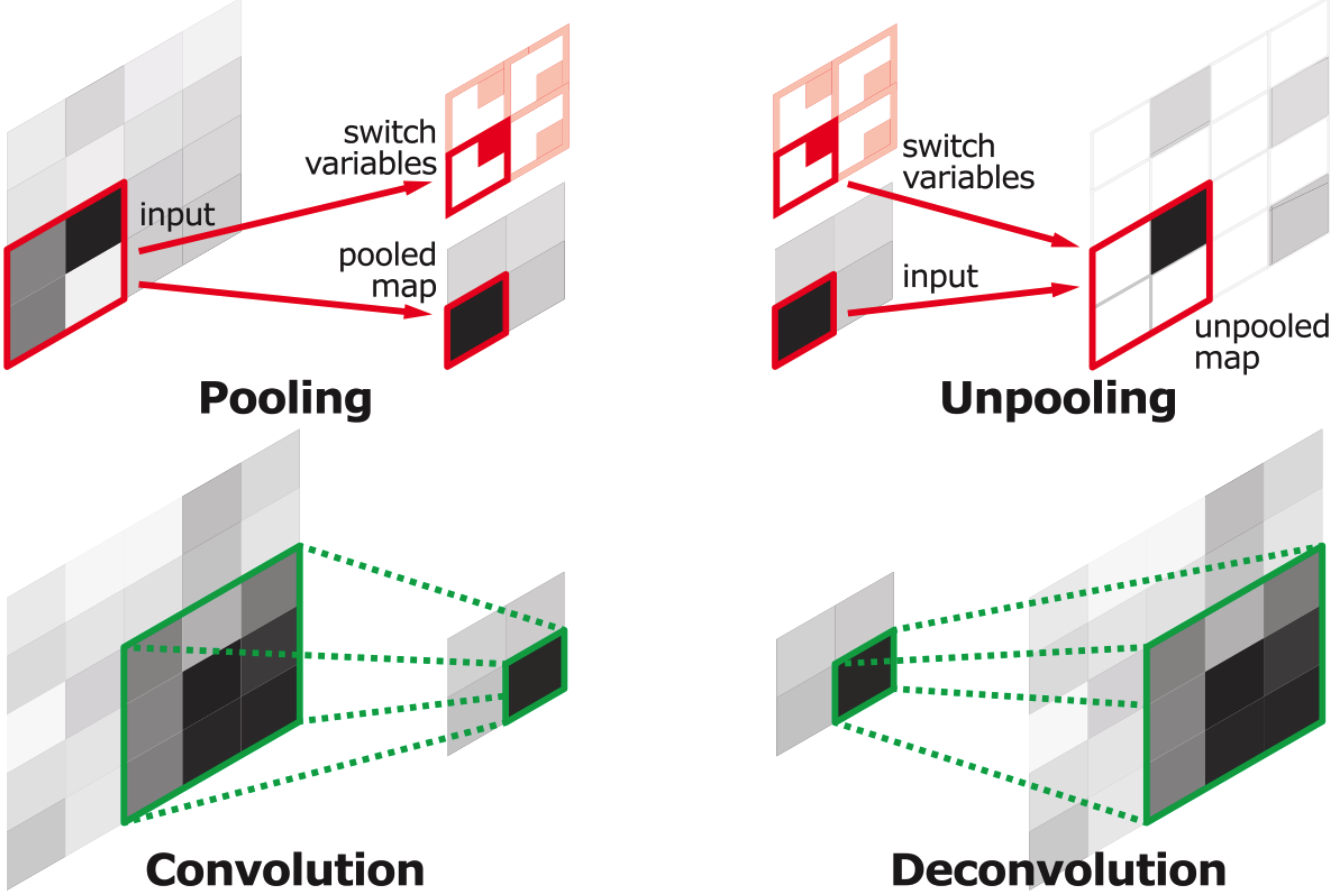
Un-pooling
- Activation maps are UP-sampled
Deconvolution
- coarse activation maps are densified
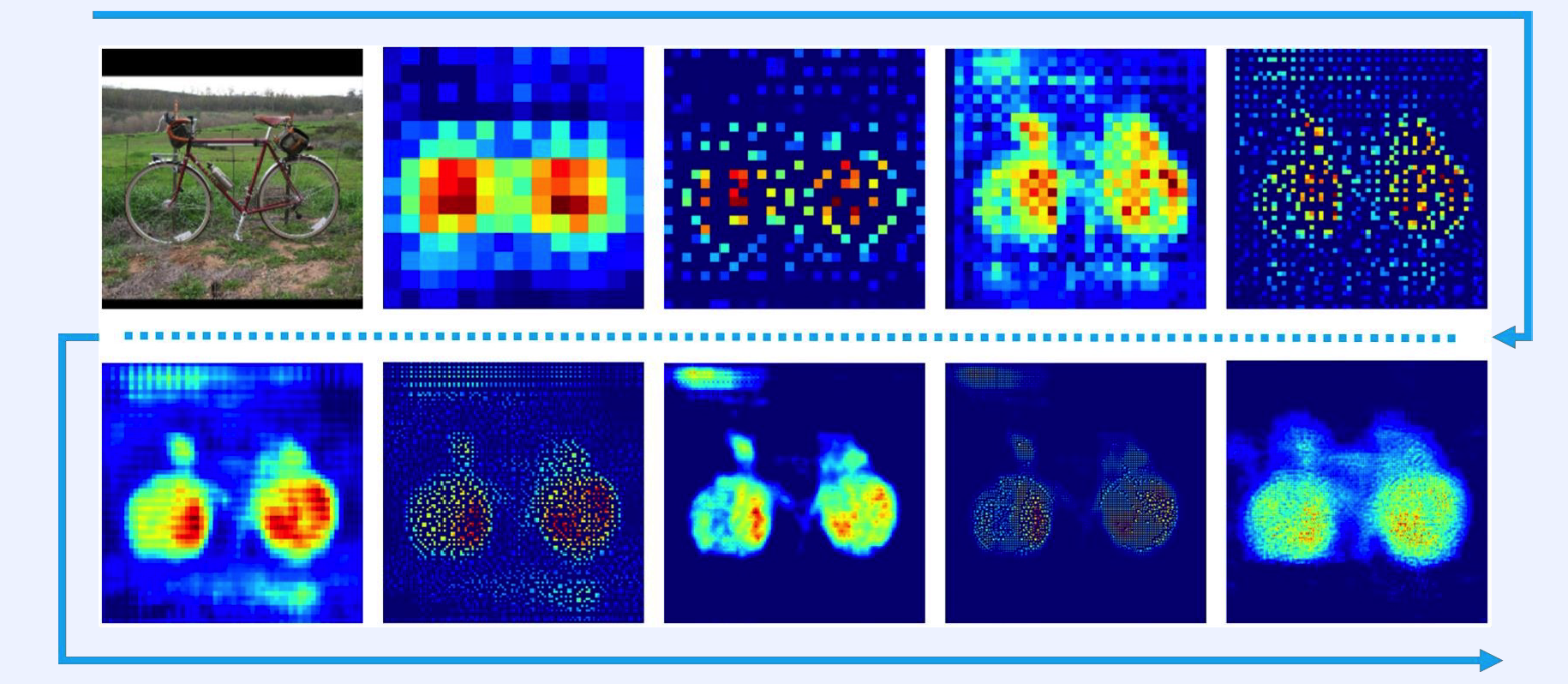
4. U-Net
- https://seunghan96.github.io/dl/cv/cv-UNet/
######
